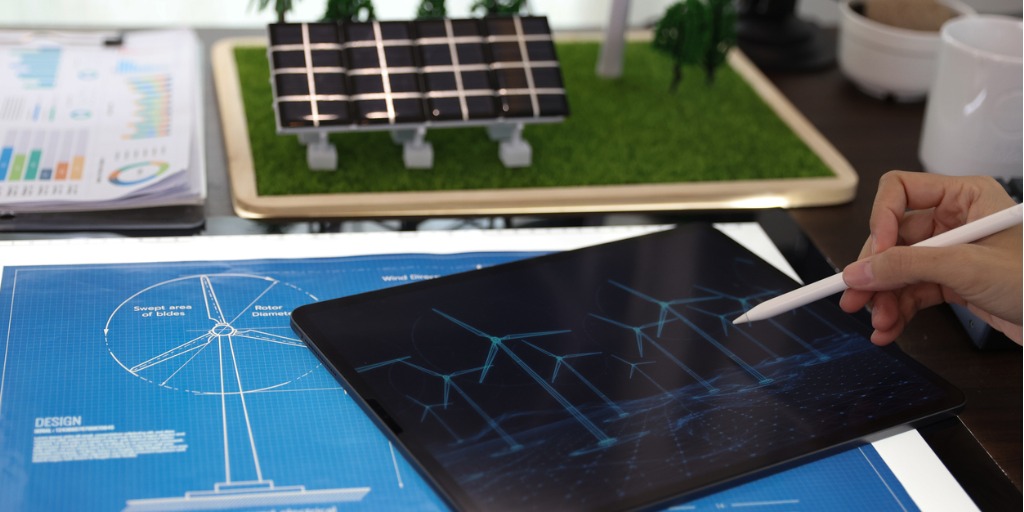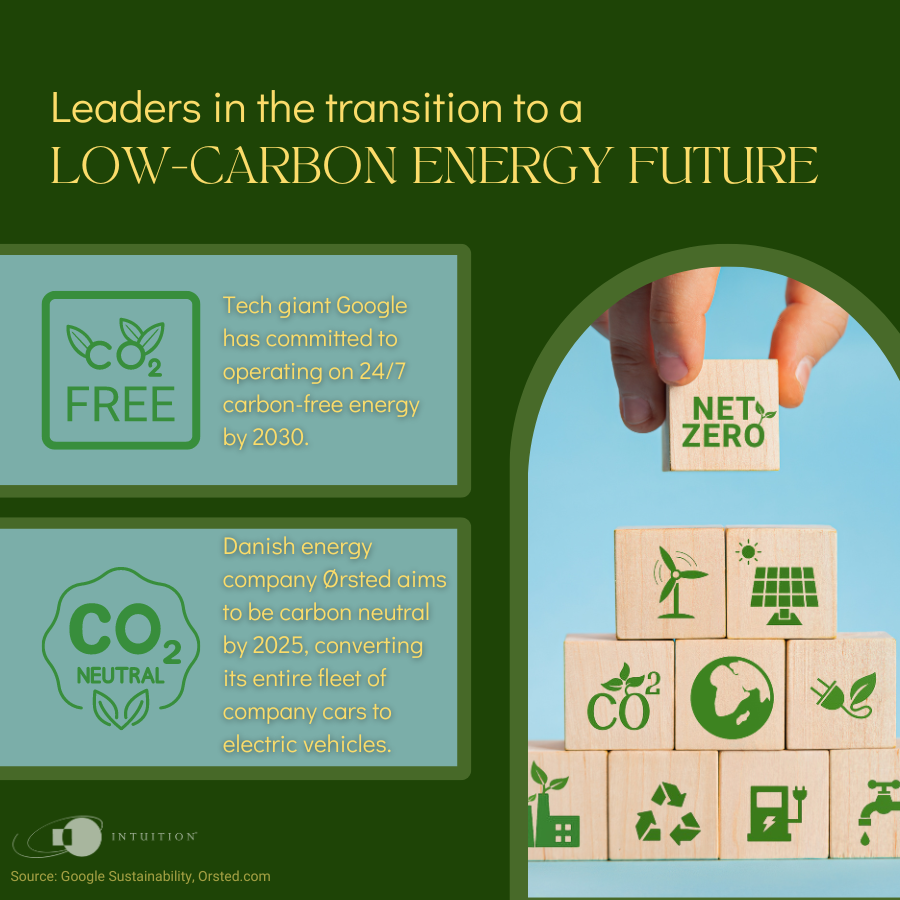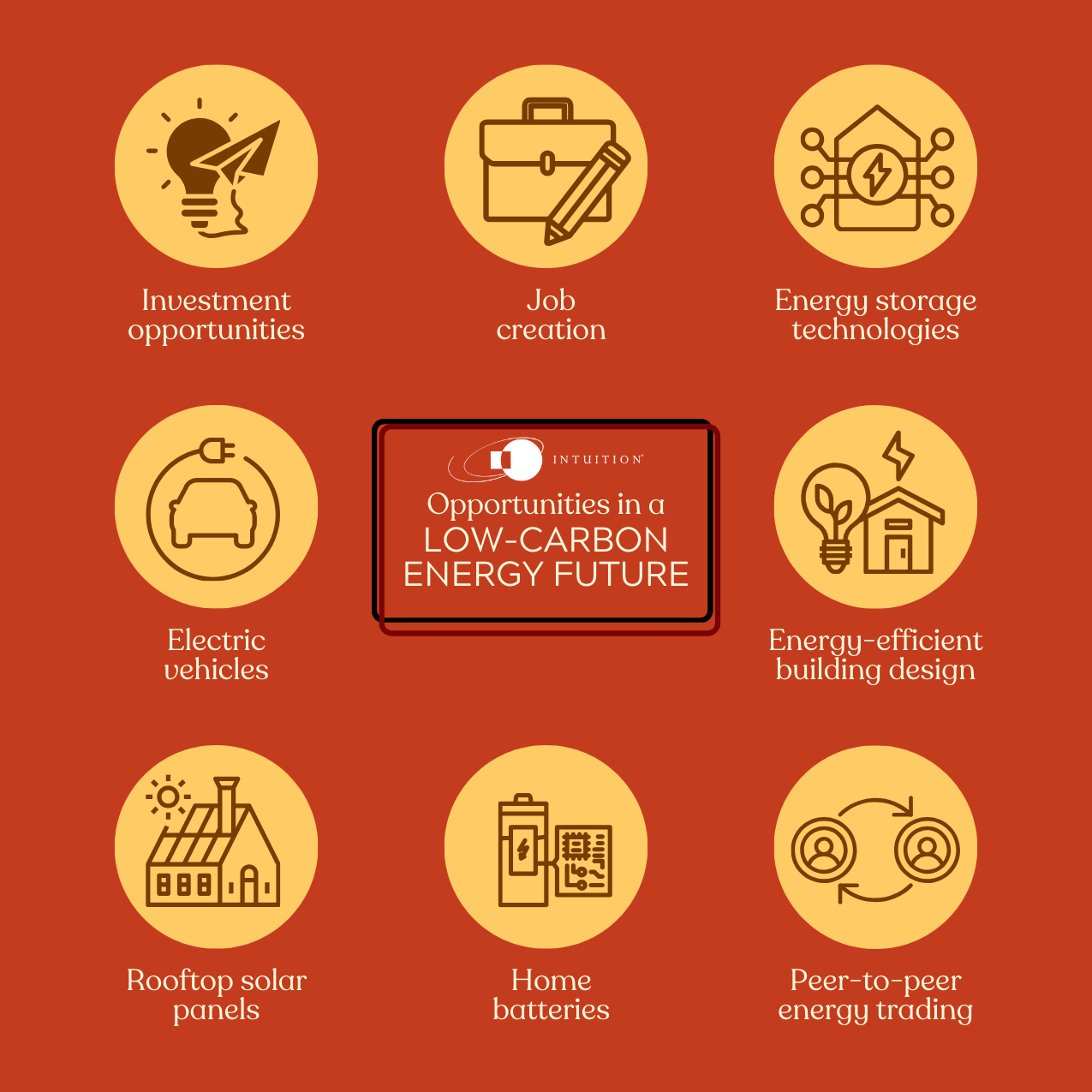How companies can create a low-carbon energy future

In a world increasingly aware of the environmental impact of human activity, the move toward a low-carbon energy future has never been more critical. Significant strides have been made to date, with many companies already putting plans in place or developing strategies for the energy transition. However, as with any large-scale change, this transition is not without its challenges.
The concept of a low-carbon energy future is centered around the reduction of greenhouse gas emissions, particularly carbon dioxide, from energy production and consumption. The aim is to significantly cut these emissions while still meeting the world’s energy needs, a task that requires innovative solutions and a shift in traditional energy paradigms.
The journey toward a low-carbon energy future is not only crucial for the environment but also presents an array of opportunities for industries, governments, and individuals. It involves the development and implementation of renewable energy sources, energy-efficient technologies, and a comprehensive overhaul of current energy systems.
Exploring current progress in the low-carbon energy transition
Globally, significant strides have been made in the journey toward a low-carbon energy future. Renewable energy sources such as wind, solar, and hydroelectric power have seen a surge in development and implementation. These renewable sources, which emit little to no carbon dioxide during operation, are key in displacing fossil fuel-based energy production.
Furthermore, advancements in energy efficiency have also contributed to the reduction of carbon emissions. Energy-efficient technologies and practices reduce the amount of energy required to perform the same task, effectively lowering carbon dioxide emissions. These advancements range from improved insulation in buildings to more efficient industrial processes and transportation methods.
However, despite these achievements, much work remains to be done. Fossil fuels such as coal, oil, and natural gas still dominate the global energy landscape, and the transition to low-carbon energy sources is not happening sufficiently quickly to mitigate the impacts of climate change effectively.
Company strategies for a low-carbon energy future
Companies across various industries play a pivotal role in the transition to a low-carbon energy future. Many have started to integrate low-carbon strategies into their business models, recognizing the environmental necessity and the potential for economic growth these strategies present.
One common strategy is the shift toward renewable energy sources. Companies are investing in renewable energy projects or purchasing renewable energy credits to offset their carbon emissions. Some companies are also exploring innovative ways to harness renewable energy, such as through the use of energy storage technologies or microgrids.
Another strategy is improving energy efficiency. Companies are investing in energy-efficient technologies and practices, ranging from energy-saving lighting and heating systems to more efficient manufacturing processes. By reducing their energy consumption, these companies are not only reducing their carbon emissions but also saving on energy costs.

Companies making significant strides
Several companies are leading the way in the transition to a low-carbon energy future.
Google, for instance, has committed to operating on 24/7 carbon-free energy by 2030. The tech giant is not just purchasing renewable energy to offset its carbon emissions; it is striving to use renewable energy around the clock.
Another example is Ørsted, a Danish energy company. Once one of the most coal-intensive utilities in Europe, Ørsted has transformed into a global leader in offshore wind power. The company aims to be carbon-neutral by 2025 and has committed to converting its entire fleet of company cars to electric vehicles.
Challenges in the journey
The journey toward a low-carbon energy future is, unsurprisingly, fraught with challenges. One of the major hurdles is the existing energy infrastructure, which is heavily dependent on, and skewed toward, fossil fuels. Transitioning to low-carbon energy sources requires significant investment in new infrastructure and the phasing out of outdated, carbon-intensive systems.
Additionally, the intermittent nature of some renewable energy sources, such as wind and solar power, poses a challenge. These sources are dependent on weather conditions, and as such, their output is not always reliable. This challenge underscores the need for energy storage solutions and a diverse mix of energy sources.
Moreover, there are geopolitical considerations to account for. The shift to a low-carbon energy future can disrupt economies heavily reliant on fossil fuel production and export, potentially leading to political resistance and social unrest.
[Energy transition: How finance professionals can overcome challenges]
The balance between sustainability and competitiveness
For many industries, the task at hand is to move toward a more sustainable future while remaining competitive on a global scale. It is not always easy to strike this balance, as the transition to low-carbon energy can entail substantial upfront costs.
However, in the long term, the shift toward a low-carbon energy future can offer significant economic benefits. Renewable energy sources, for instance, have become increasingly cost-competitive with traditional fossil fuels. Moreover, energy efficiency measures can result in significant cost savings.
Companies that embrace sustainability can enhance their brand image and attract socially-conscious consumers and investors. In this way, sustainability and competitiveness can coexist successfully and productively.
Future outlook on the low-carbon energy transition
The transition to a low-carbon energy future is a complex and challenging process, but the momentum is building. Technological advances, coupled with growing public awareness of climate change and political commitments to reduce emissions, are driving the shift toward a sustainable energy future.
In the coming years, the pace of the transition is likely to accelerate. Renewable energy technologies are becoming more efficient and affordable, and the potential for energy storage technologies, such as batteries and hydrogen, is being realized.
However, the transition is not just about technology. It also requires a cultural shift in the way we think about and use energy. The choices made by individuals, businesses, and governments will be instrumental in determining the speed and success of the transition.

Role of government policies and regulations in energy transition
Government policies and regulations play a crucial role in facilitating the transition to a low-carbon energy future. They can set the framework and provide the incentives for businesses and individuals to reduce their carbon emissions.
Policies such as renewable portfolio standards and feed-in tariffs can promote the development and use of renewable energy. Carbon pricing mechanisms, such as carbon taxes or cap-and-trade systems, can make it more expensive to emit carbon dioxide, thereby incentivizing low-carbon alternatives.
Regulations can also enforce energy efficiency standards and mandate the phase-out of certain high-emitting activities or products. However, it is essential that these policies and regulations are designed and implemented in a way that is fair and equitable, taking into account the different circumstances and capabilities of various countries and regions.
Opportunities for industries in a low-carbon energy future
A low-carbon energy future presents a wealth of opportunities for industries. The renewable energy sector, for instance, is poised for significant growth, offering opportunities for investment and job creation.
The transition can also spur innovation in various fields, from energy storage technologies to electric vehicles and energy-efficient building design. Companies that seize these opportunities can gain a competitive edge and contribute to a sustainable future.
Furthermore, the shift to a low-carbon energy future can foster new business models and markets. For instance, the rise of distributed energy resources such as rooftop solar panels and home batteries can enable peer-to-peer energy trading, transforming traditional energy consumers into energy producers.
Conclusion: The path ahead towards a sustainable future
The journey toward a low-carbon energy future is a monumental task, but it is one that holds immense promise. The strides made so far are encouraging, yet there is much more to be done.
Companies have a significant role to play in this transition, and those that embrace the challenge can reap substantial benefits. However, the transition is not without its challenges, and finding the balance between sustainability and competitiveness will be key.
Government policies and regulations will be integral in guiding and accelerating the transition, and they must be designed with fairness and equity in mind. Moreover, the transition presents ample opportunities for industries, from renewable energy to energy efficiency and beyond.
The path toward a sustainable future is not easy, but it is necessary. The stakes are high, but so too are the rewards. As we look ahead, the journey toward a low-carbon energy future is not only a challenge but also an opportunity to create a better, more sustainable world.


